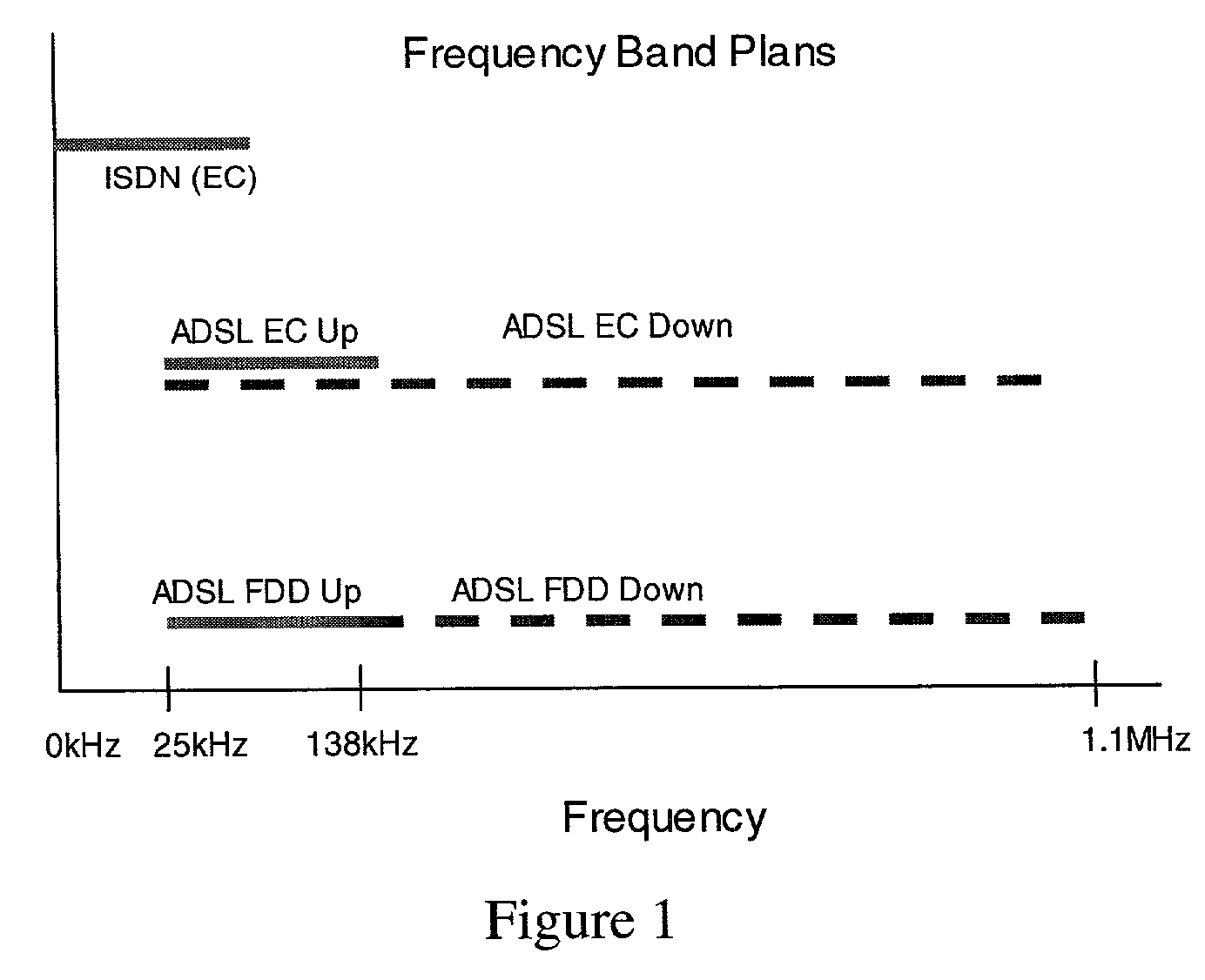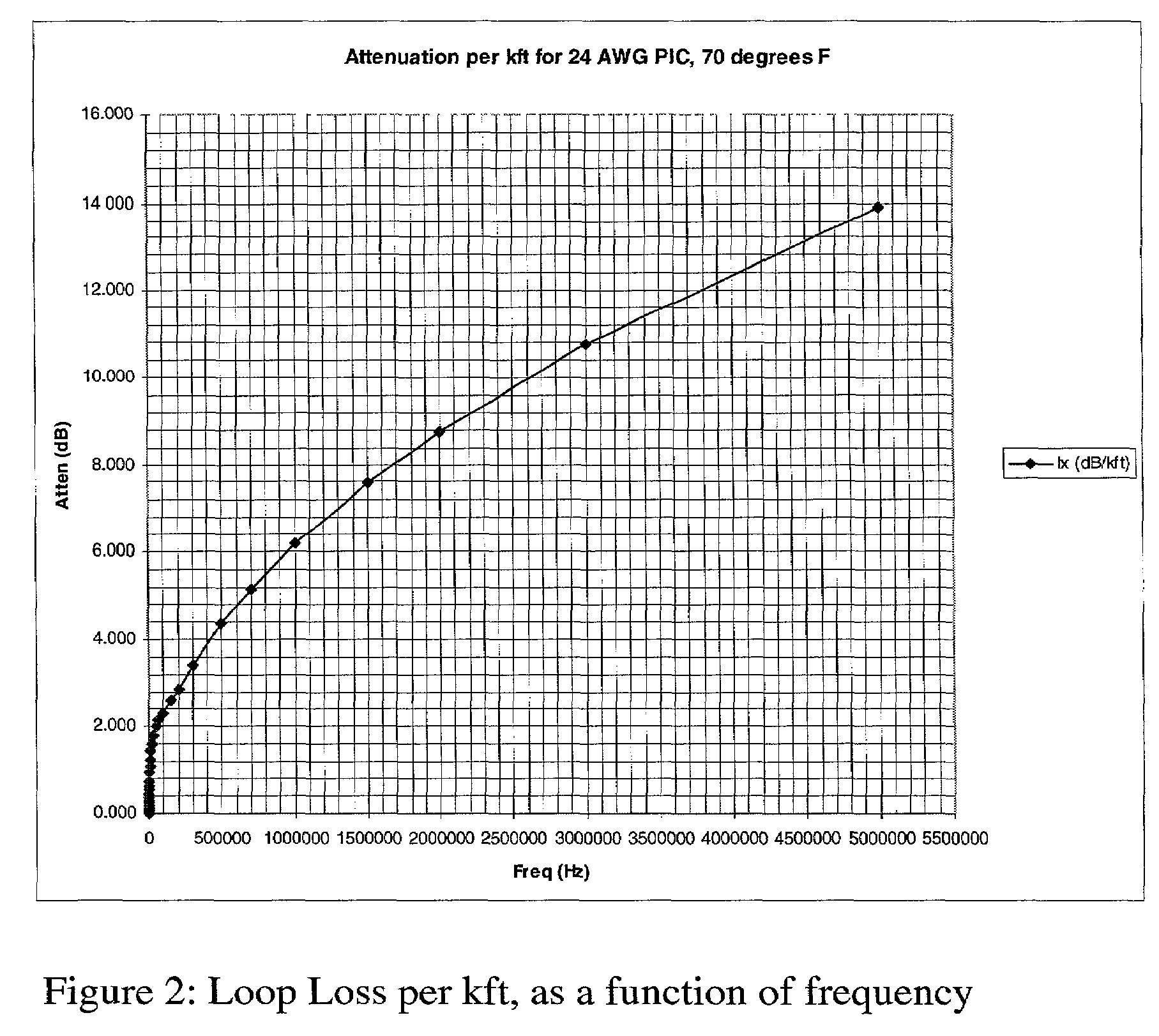System and method for improved data transmission speed by fixing the lower corner frequency at a frequency above voice band in a symmetric DSL transmission system
a transmission system and data transmission technology, applied in data switching networks, multiplex communication, frequency-division multiplex, etc., can solve the problems of inability to share a line with voiceband analog voice equipment, failure to achieve successful communication, and limited existing fiber infrastructure, so as to achieve low loss, lower crosstalk, and low loss
- Summary
- Abstract
- Description
- Claims
- Application Information
AI Technical Summary
Benefits of technology
Problems solved by technology
Method used
Image
Examples
Embodiment Construction
[0070]The following description is intended to convey a thorough understanding of the invention by providing a number of specific embodiments and details involving improved data transmission speed in a symmetric DSL transmission system. It is understood, however, that the invention is not limited to these specific embodiments and details, which are exemplary only. It is further understood that one possessing ordinary skill in the art, in light of known systems and methods, would appreciate the use of the invention for its intended purposes and benefits in any number of alternative embodiments, depending upon specific design and other needs.
[0071]While the lower corner frequency may be set at different levels, according to one embodiment of the present invention, it may be desirable to set the lower corner frequency above the voice band and any voice communication channel employed on the line. For example, in one embodiment of the present invention, a lower corner frequency of around...
PUM
 Login to View More
Login to View More Abstract
Description
Claims
Application Information
 Login to View More
Login to View More - R&D
- Intellectual Property
- Life Sciences
- Materials
- Tech Scout
- Unparalleled Data Quality
- Higher Quality Content
- 60% Fewer Hallucinations
Browse by: Latest US Patents, China's latest patents, Technical Efficacy Thesaurus, Application Domain, Technology Topic, Popular Technical Reports.
© 2025 PatSnap. All rights reserved.Legal|Privacy policy|Modern Slavery Act Transparency Statement|Sitemap|About US| Contact US: help@patsnap.com



